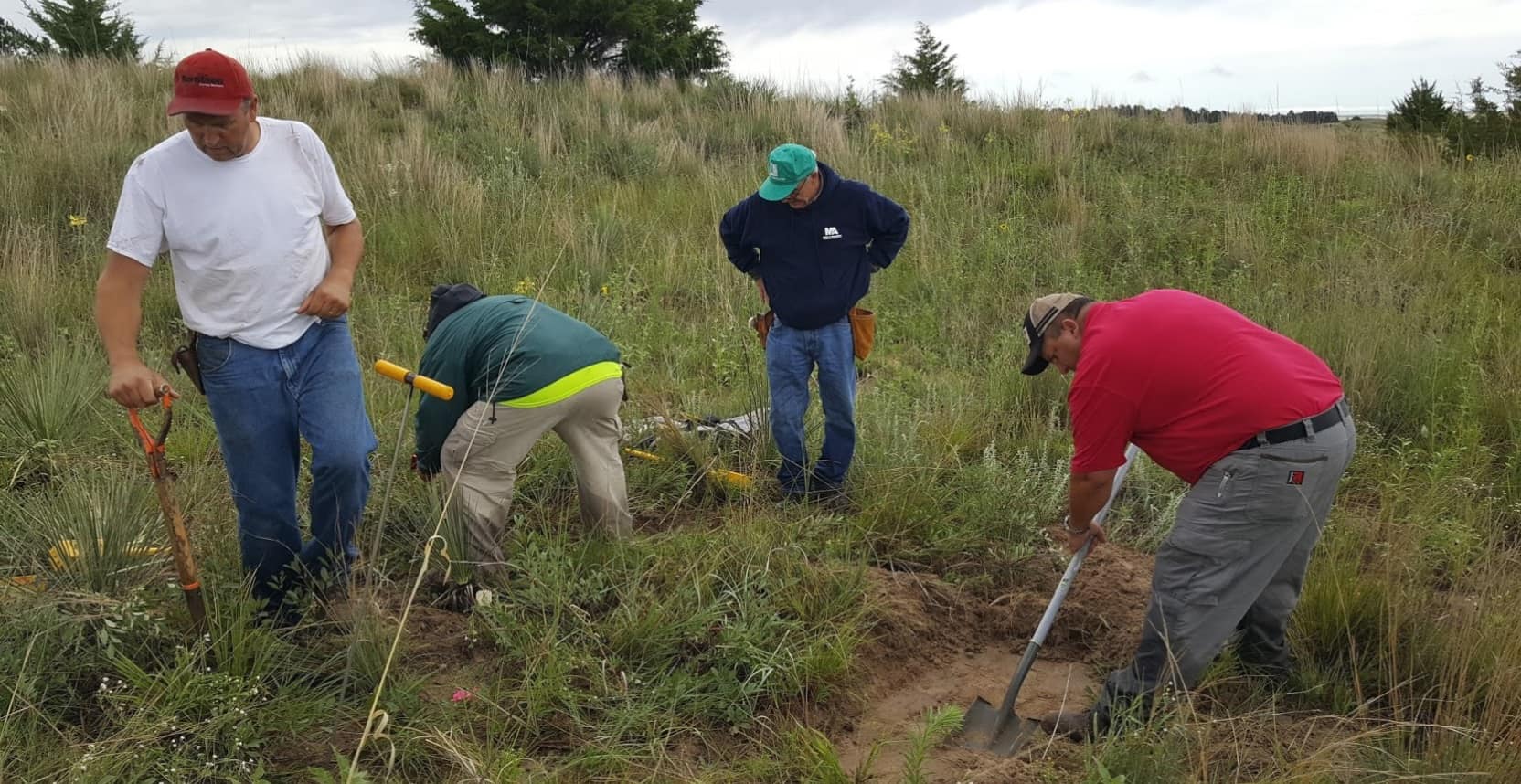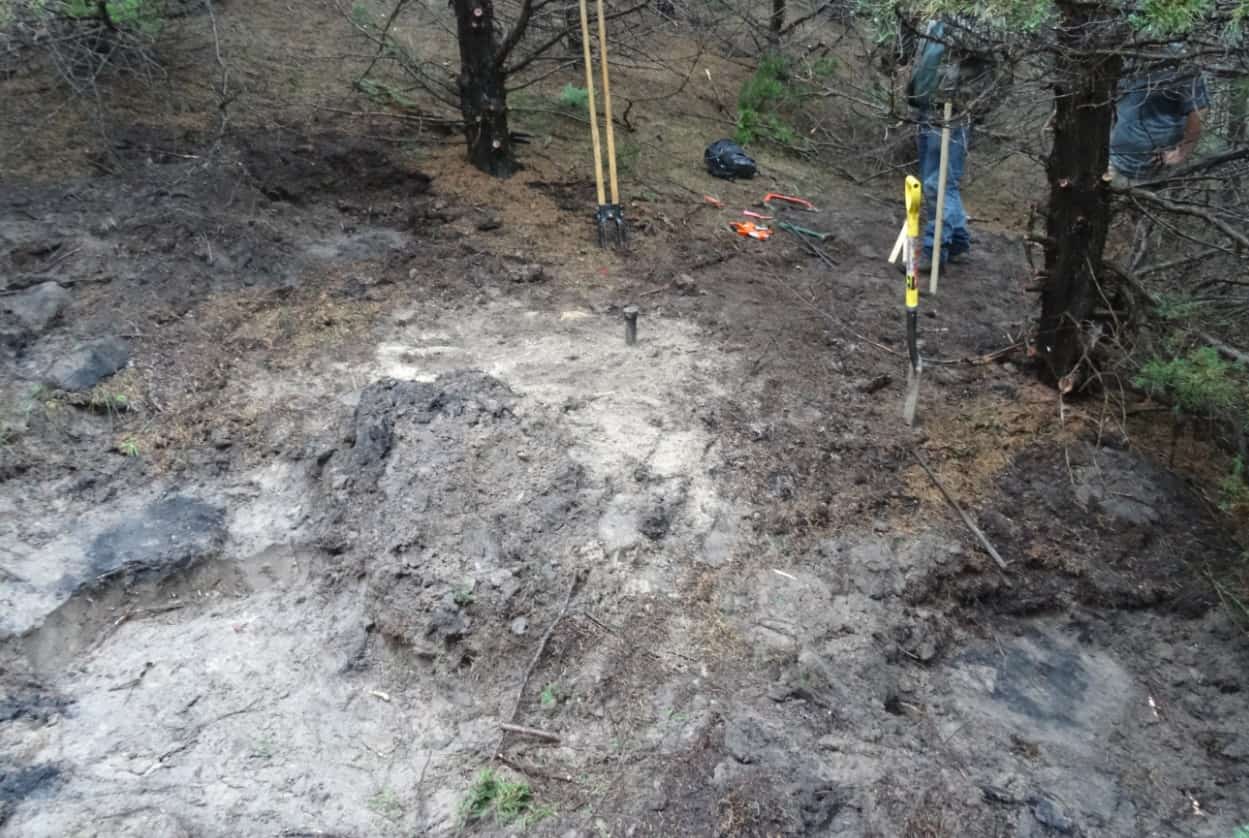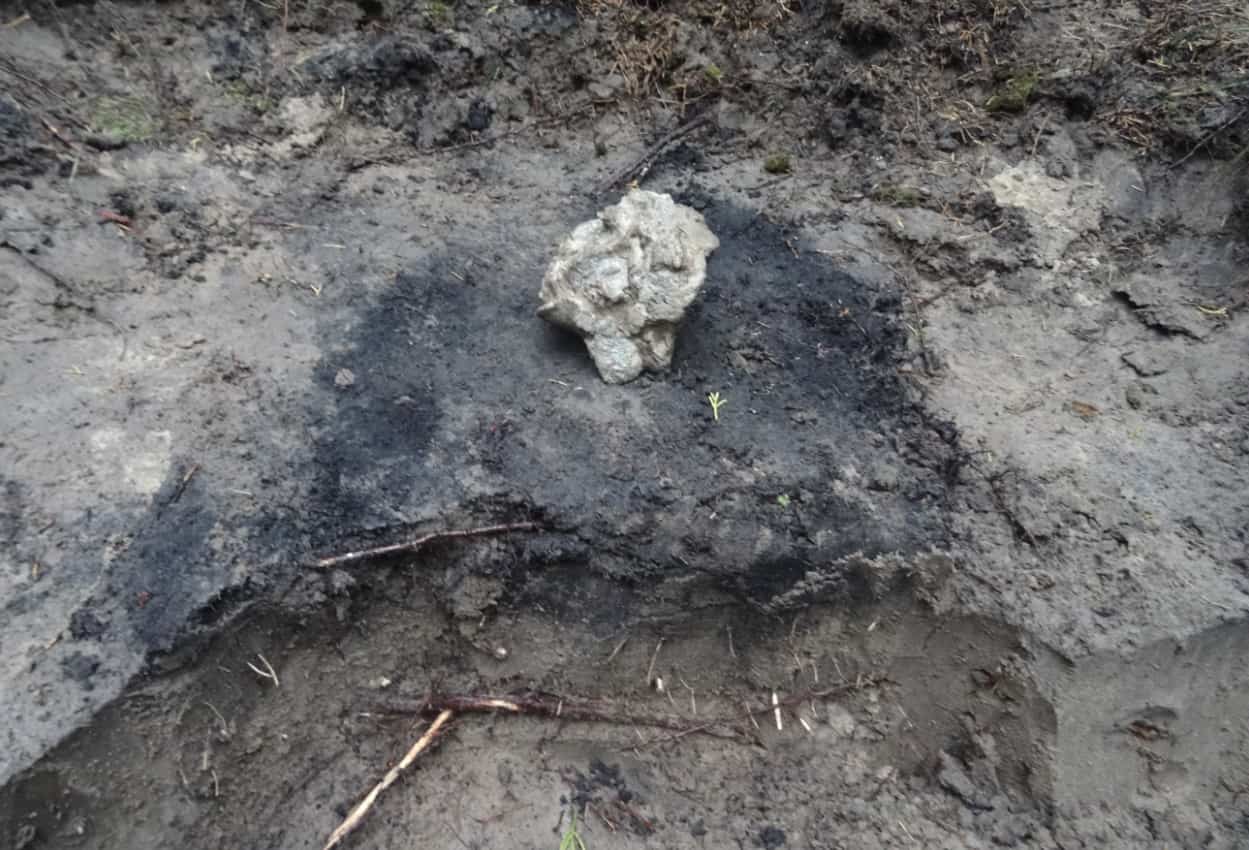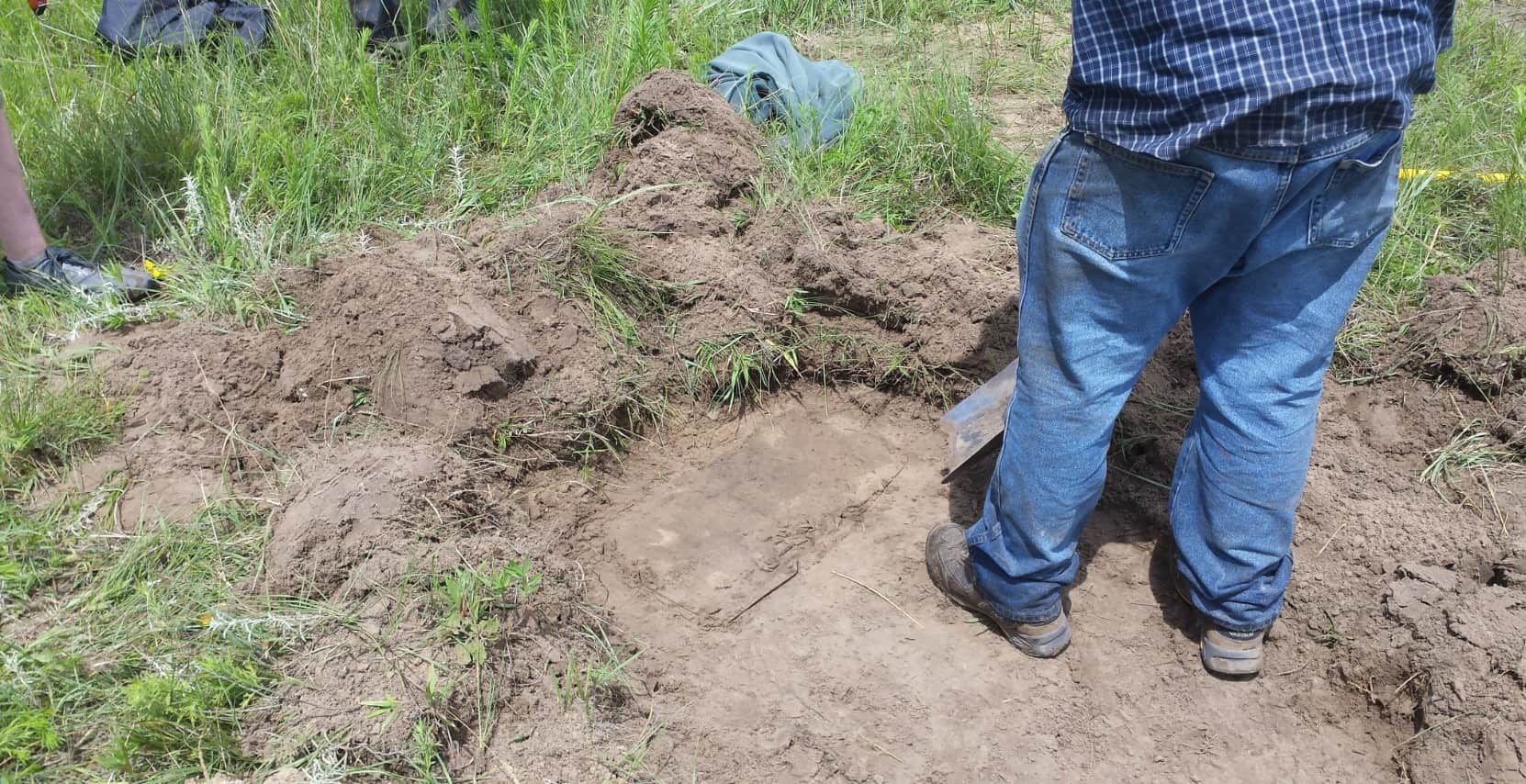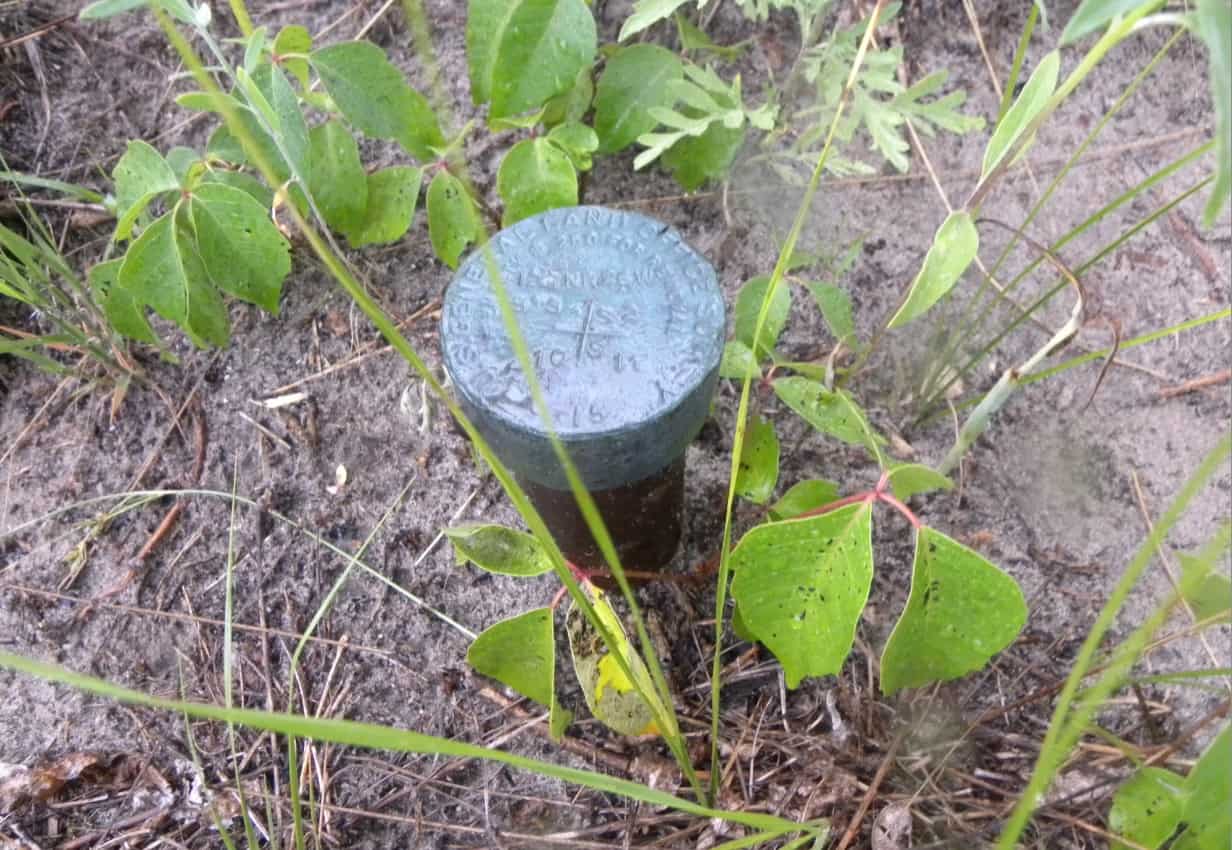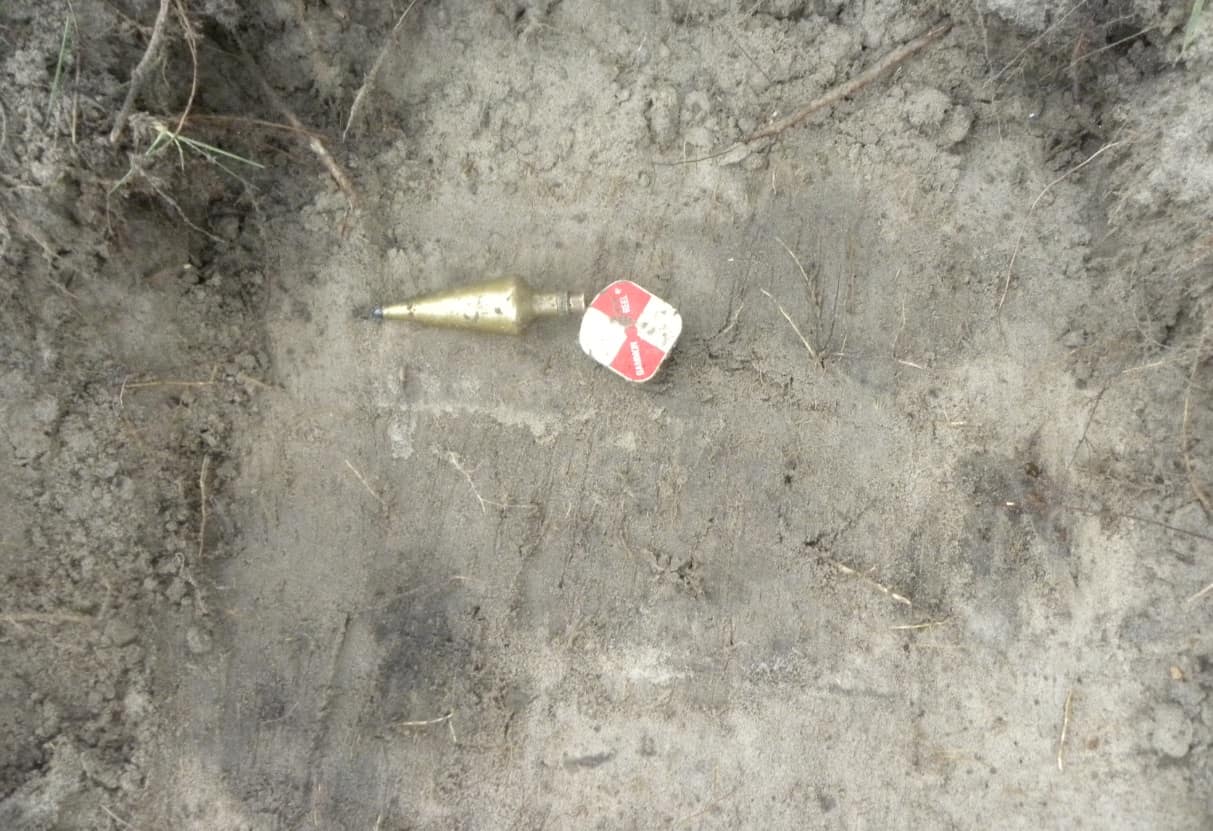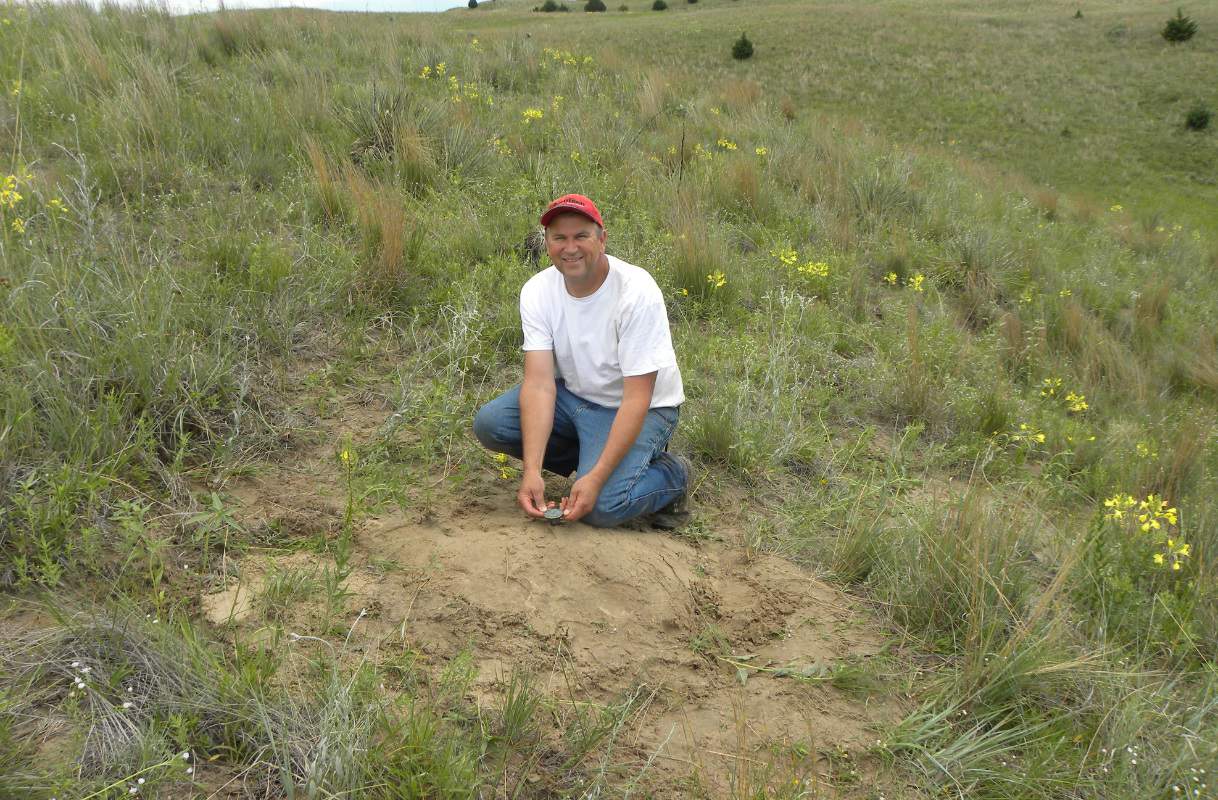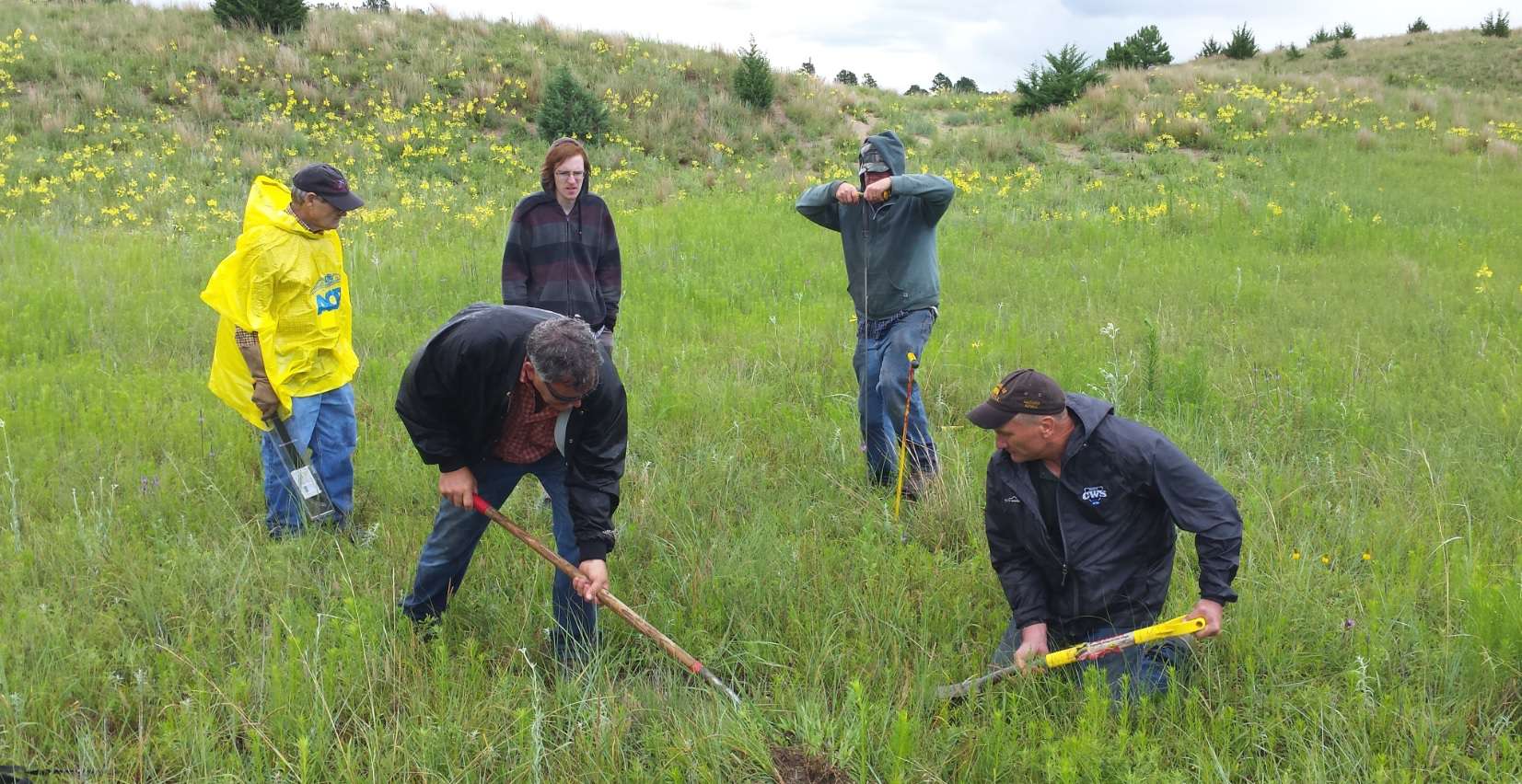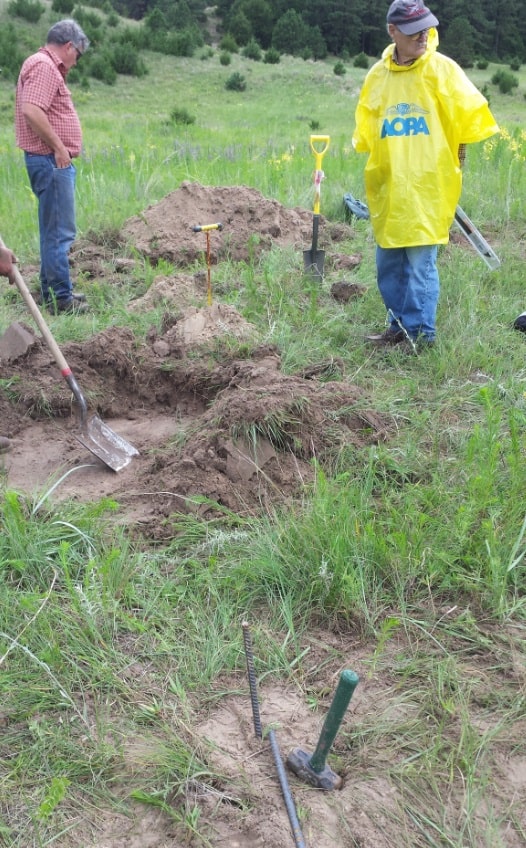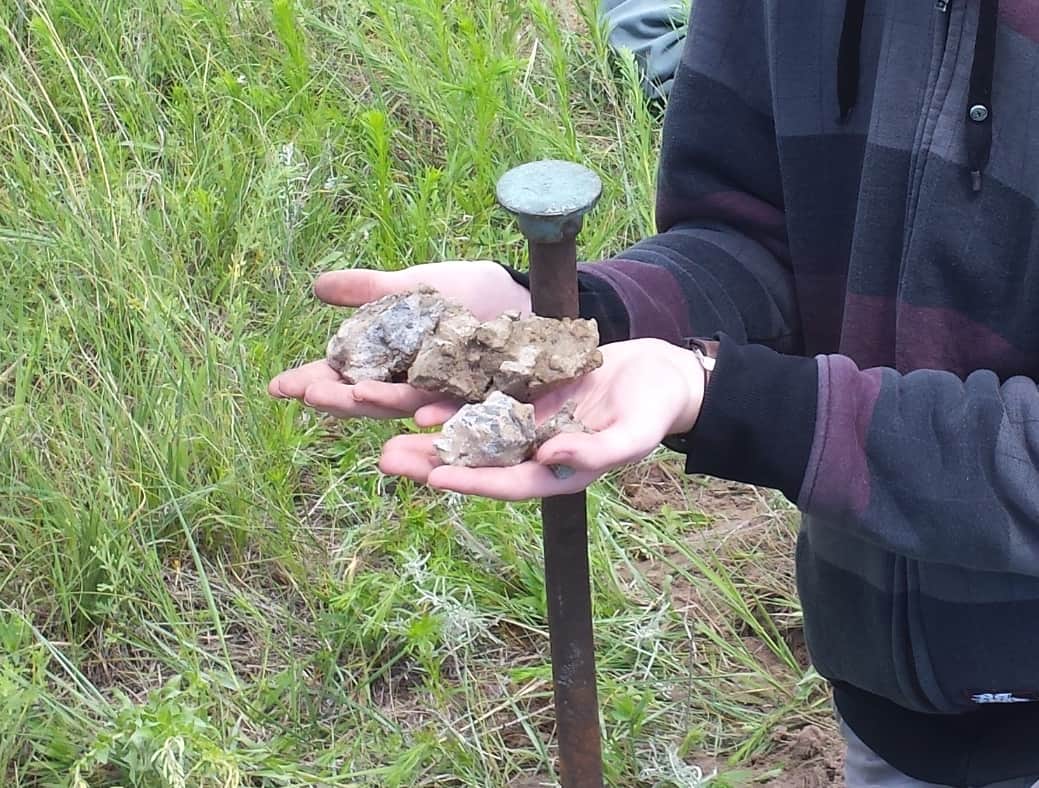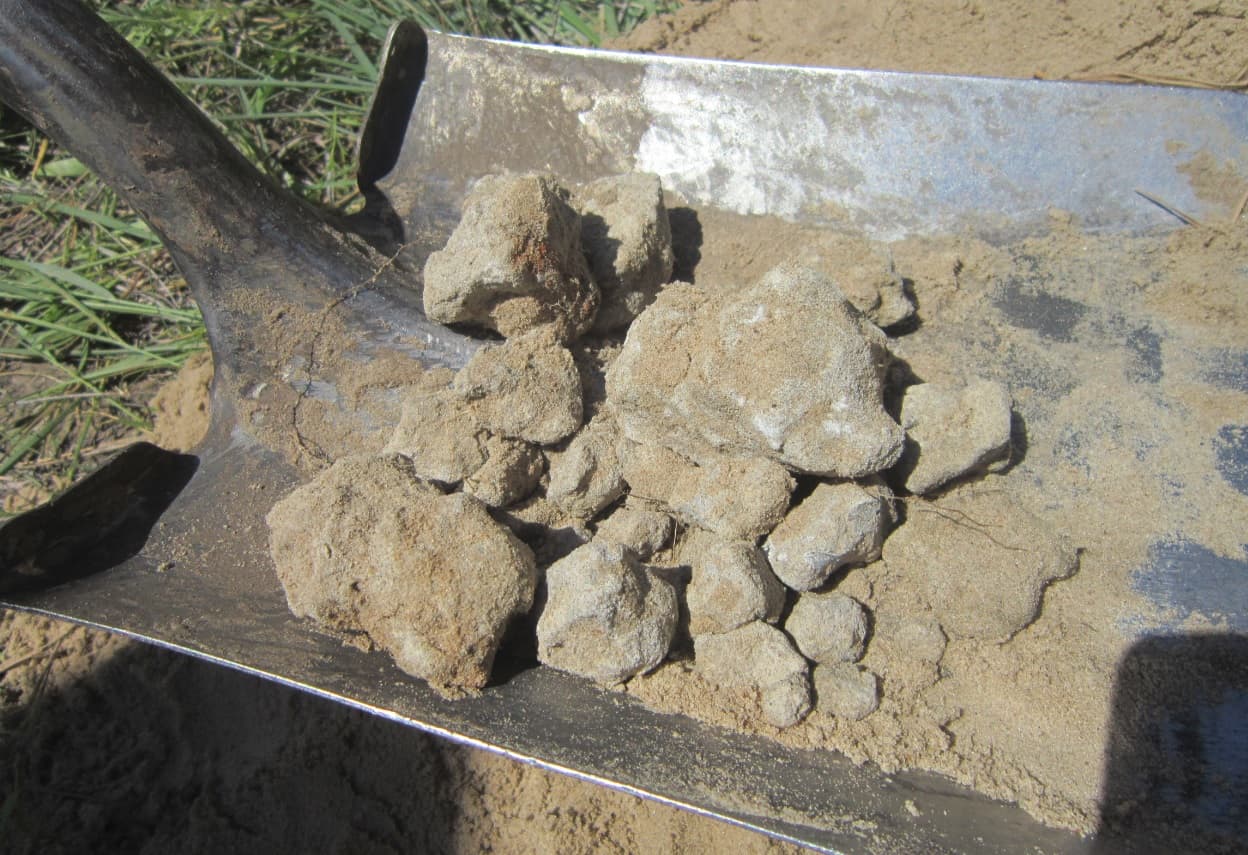I hosted our Nebraska summer seminar last week at the Nebraska National Forest near Halsey and had great success with nearly 30 surveyors attending from four different states. The longest distance traveled was Jerry Davis from North Carolina. This area of Nebraska was resurveyed in 1915 with bronzed capped iron pipes placed for monuments. A memorial stated to be a cement base 8"x8"x6" was placed at each corner and four pits were dug at the section corners and two at the quarter corner. The memorials turned out to be irregular shaped pieces of concrete. I found a tin can in very good condition under the pipe at one of the corners that my group found instead of concrete. This is our second consecutive year of having a "working" seminar outdoors. Note: All monuments were referenced before digging and replaced exactly as found.
Awesome Jerry. I've never seen a found pit.
Nice photos Jerry, thanks! A past BLM Cadastral Survey Chief gave me some photos of a BLM crew "excavating" while searching for pits in Nebraska. I'll post them if I ever find them. They were using a mule team and a plow to remove 15 - 20 feet of dirt that had blown in during the dust bowl era! I never really understood prior to seeing those photos...
J. Penry, post: 381966, member: 321 wrote: I hosted our Nebraska summer seminar last week at the Nebraska National Forest near Halsey and had great success with nearly 30 surveyors attending from four different states.
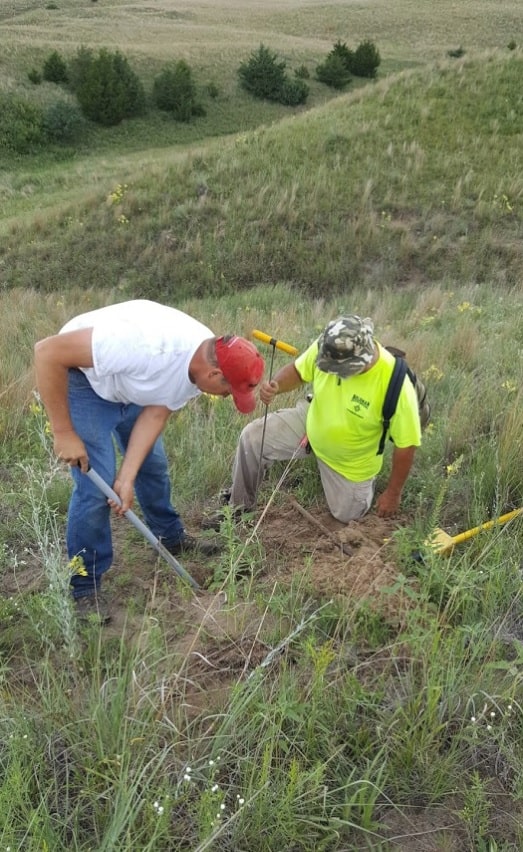
Am I right in thinking that the pits could be located with the probe because of the change in soil texture? That is pretty remarkable in a soil as sandy as the native soil in that locality appears to be. Do you think the texture was different because the wind graded out the fines that may have produced the more consolidated undisturbed soil around the pit or was there some other mechanism?
It might be possible to find pits with a probe, but it would take an experienced searcher who isn't overly ambitious to just start poking holes. One of the main objectives I wanted to have those participating realize firsthand is that the notes were often a generalization and not an exact representation of what was actually done. The cement memorials were all stated to be 8"x8"x6". One therefore gets a visual of searching for something prefabricated with concise measurements. In reality, it appears that they might have just poured a quick can of loose cement in the hole. The can that I found was 4" diameter and 5" tall and had concrete residue in the bottom. The absence of what is stated in the notes should never be rejected if you find something. At other locations, searchers found small globs of individual concrete or a softball sized mass. The pits were recorded as being 20"x20"x15" and placed at 7' from the monument. One has to realize that the moundsmen wanted to keep up with the rest of the crew and probably rarely measured the 7' distance or the dimensions and depth of the pits. They just got good at making the pits at the general distance and size. As with anything, the more field experience you gain, the more you become keenly aware of what was actually done and what you should be looking for. Most importantly when searching for pits is to scrape horizontally and never vertically. A flat and sharpened shovel is a must.
An example of a concrete memorial stated to be 8"x8"x6" in the notes. This monument was carefully and slowly excavated and this is what was found. It is highly unlikely that anyone has ever disturbed this location since it has always been well within the forest at the time of the survey and there is no reason for anyone to have even needed the monument. This doesn't match the GLO notes, but one should conclude that this is the result of what was intended.
Awesome pics! I sure hope I can attend one of these workshops in the future.
Thanks for sharing
Very nice!!!
Your point about the pits not following the notes isn't surprising.
I did see what I thought were pits looking for a 1/4 on a N-S line last year.
They were N-S from the corner instead of E-W as the notes stated (assuming that they were the pits and not two random cow wallows near the math position).
It turned out that I didn't need the 1/4 so I never went back to monument that corner.
I was the idiot wearing the yellow plastic rain garb with AOPA on it. That was the second trip to Nebraska for their working Seminar. My trip was 1,608 miles going out and 1,606 miles on the way back. Last year was the northwest corner of Nebraska.
I did a 7 year tour of duty with the Nebraska Air National Guard at Lincoln, while I was based at Kansas City flying for TWA. The time with the ANG was 1967 to 1974, that finished off my twenty good years for retirement from the Air Force. I was 38 when I retired and started drawing the retired pay when I reached 60.
Being from North Carolina it is kinda hard to see the advantage of the section style of surveying. In theory it is great but theory doesn't always get put on the ground as the map says. I prefer the colonial method. It's nice to visit the section folks and get a taste of how difficult it can be at times.
If you ever have a chance do not miss meeting Jerry Penry. He is a most interesting fellow, he has many interests and Air Planes is one of them. I met him years ago when I was at a reunion of the Air National Guard at Lincoln.
